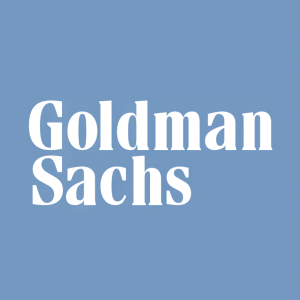[424B2] GOLDMAN SACHS GROUP INC Prospectus Supplement
GS Finance Corp. (GS) is offering S&P 500®-linked auto-callable notes with an aggregate face amount of $2,136,000, fully and unconditionally guaranteed by The Goldman Sachs Group, Inc. The notes do not pay interest and are issued at 100% of face amount, with a 2% underwriting discount and 98% net proceeds to the issuer.
The notes may be automatically called on the call observation date of November 27, 2026 if the S&P 500 closing level is at or above the initial level of 6,734.11, in which case investors receive $1,080 per $1,000. If not called, the maturity is November 17, 2028 and the payoff depends on index performance: 198.82% upside participation above the initial level, return of principal if the index ends between 90% and 100% of the initial level, and leveraged losses below the 10% buffer that can result in a total loss of principal.
Investors face the credit risk of both GS Finance Corp. and The Goldman Sachs Group, Inc., potentially limited secondary market liquidity, market value sensitivity to interest rates and volatility, and uncertain U.S. tax treatment characterized as a pre-paid derivative contract under current issuer guidance.
- None.
- None.
FAQ
What are the GS (GS) S&P 500 auto-callable notes described here?
The notes are S&P 500® Index-linked, auto-callable structured notes issued under GS Finance Corp.’s Medium-Term Notes, Series F program and fully and unconditionally guaranteed by The Goldman Sachs Group, Inc. They offer equity-linked exposure, no periodic interest, and a contingent repayment of principal at maturity.
How does the automatic call feature work on these GS S&P 500 notes?
On the call observation date of November 27, 2026, if the S&P 500 closing level is at or above the initial underlier level of 6,734.11, the notes are automatically called. On the call payment date of December 2, 2026, investors then receive $1,080 per $1,000 face amount (108% of face), and the investment ends early.
What is the payoff at maturity if the GS notes are not automatically called?
If the notes are not called, the stated maturity date is November 17, 2028. For each $1,000 face amount: if the final S&P 500 level is above 6,734.11, investors receive $1,000 plus 198.82% of the index gain; if the final level is between 90% and 100% of the initial level, investors receive $1,000; if it falls below the 90% buffer level, repayment is reduced using a buffer rate of approximately 111.11% of the loss beyond 10%, potentially down to zero.
Do the GS S&P 500 auto-callable notes pay interest?
No. The notes do not bear interest. The investor’s return comes solely from the potential call premium of $80 per $1,000 if called, or from the equity-linked payoff at maturity, which can be positive, flat, or result in a substantial or total loss of principal.
What are the main risks of investing in these GS structured notes?
Key risks include the possibility of losing your entire investment if the final S&P 500 level is far below the 10% buffer, no interest income, an early automatic redemption that may occur when reinvestment opportunities are unattractive, and the lack of any shareholder rights or dividends from the underlier stocks. The notes are subject to the credit risk of both GS Finance Corp. and The Goldman Sachs Group, Inc., and may have limited or volatile secondary market prices.
How is the estimated value and market value of the GS notes determined?
The original issue price of the notes exceeds their initial estimated value, which is calculated using GS&Co.’s proprietary pricing models that consider credit spreads, interest rates, volatility and time to maturity. The excess over estimated value declines to zero on a straight-line basis over a defined period. Secondary market prices, if GS&Co. makes a market, will also reflect these models, bid-ask spreads, commissions or dealer discounts, and any changes in creditworthiness.
What are the U.S. federal income tax considerations for these GS notes?
Tax treatment is uncertain. Under the issuer’s approach, each note is treated as a pre-paid derivative contract on the S&P 500, and Sidley Austin LLP opines that it would be reasonable to recognize capital gain or loss on sale, exchange, redemption or maturity equal to cash received minus tax basis. The notes are generally subject to FATCA withholding, and the issuer has determined they are not subject to dividend equivalent withholding under section 871(m) as of issue. Investors are urged to consult their own tax advisors.










